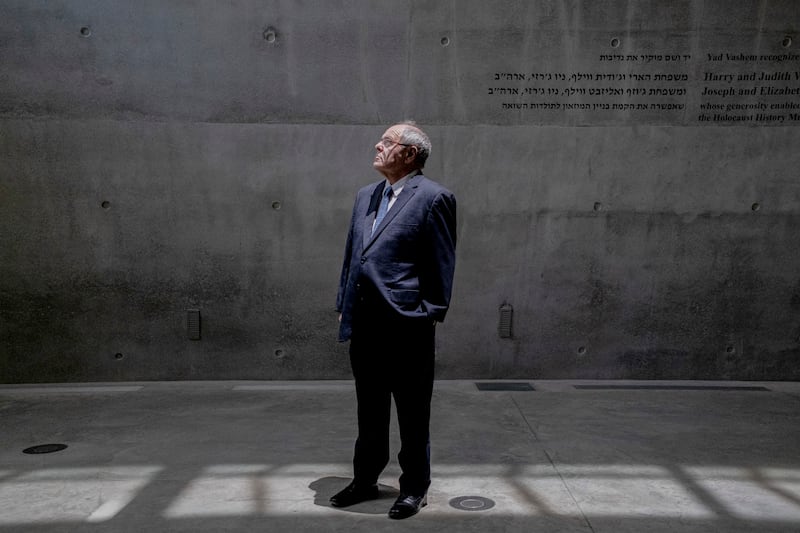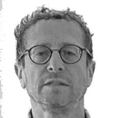In a few years’ time there will be no living witnesses to recount their experiences of the Holocaust, the greatest tragedy in Jewish history, during which some six million Jews were murdered by the Nazis and their collaborators.
The average age of the roughly 119,000 Holocaust survivors living in Israel, just under half of the world’s total, is already over 85 and the vast majority of them were aged under 10 during the second World War.
Jerusalem’s Yad Vashem, the world Holocaust Remembrance Centre, welcomes nearly a million visitors each year and hosts nearly all foreign dignitaries visiting Israel. It has been preparing in advance for the era when there will no longer be any survivors among us.
A flagship project aims to collect the names of the six million (some 4.9 million names have been recorded to date). The database includes information regarding victims of the Shoah: those who were murdered, many whose fate has yet to be determined, as well as some who survived.
READ MORE
The names of about one million of those who were murdered remain unknown – and time is running out. Efforts continue to recover their names and restore their identities. Members of the public continue to come forward with names to create a new Page of Testimony and all the information is checked and cross-referenced by Yad Vashem experts.

Tens of thousands of Holocaust survivor testimonies have been filmed and 2.8 million pages of testimony have been documented.
Simultaneously, Yad Vashem has amassed Holocaust-related artefacts, documentation, photography and artwork that aims to tell the story of the victims, along with the rich tapestry of Jewish life in the destroyed communities of pre-war Europe.
Among the highlights in the collection are blueprints of the Auschwitz death camp, postcards written by Anne Frank and striped uniforms worn by camp survivors.
In 2011, Yad Vashem launched its Gathering the Fragments campaign to rescue Holocaust-era items, aiming to link each display to an individual victim or survivor. Tens of thousands of artefacts have been donated by the public.
Some items were the only remaining wartime heirloom for a survivor, such as a teddy bear, a musical instrument, a prayer shawl or the yellow star that all Jews in Nazi-occupied Europe were forced to wear. One family donated a small shoe from a child who was seized in a Lithuanian ghetto round-up while the boy’s parents were on a work detail.
Last week Yad Vashem inaugurated a five-storey, subterranean state-of-the-art structure to house the vast collection, which includes more than 227 million pages of documentation, nearly 40,000 artefacts, 14,000 works of art and 541,000 archival photographs and films.
Yad Vashem chair Dani Dayan explained that before the opening of the new David and Fela Shapell Family Collections Centre the exhibits were kept in the vaults, out of view to the public. In an effort to make these lesser-known treasures accessible to the public, the architects of the new repository created a way for the visiting public to view how Yad Vashem maintains the integrity of its collections. Special windows allow visitors to look into the four preservation laboratories, and a glass-wrapped Tree of Life column runs vertically through the subterranean levels, providing a source of natural light to penetrate the multilevel structure.
Addressing the inauguration ceremony, he emphasised the importance of Holocaust remembrance.
“The collections housed here represent the crown jewels of the Jewish people – they are our very DNA,” he said. “The few remaining items are invaluable, each a precious link to our past. Even after 80 years, the events of the Holocaust remain beyond our full comprehension. We believe that personal stories and belongings allow us to weave fragments of the tapestry of remembrance, six-million puzzle pieces and offer a glimpse into the lives of the Jewish people and communities of Europe and north Africa.”
The new collections centre boasts the world’s most advanced laboratories for paper, photographs, artefacts, textiles and art. Many of the items received were falling apart or disintegrated on touch. It can sometimes take six months to restore an artefact and the experts aim to restore the item to its original state.
[ Dwindling Shoah survivors force shift in German remembrance cultureOpens in new window ]
Many of the paintings or etchings were made in the ghettos or camps under the most difficult circumstances using unusual materials, creating unique challenges for Yad Vashem’s restoration and preservation teams. Many paintings were painted on top of other paintings.
President Yitzhak Herzog, in his address at the inauguration ceremony, stressed the importance of keeping the Holocaust memory alive and to preserve and share it for future generations. “Together, we will continue to shed light on the truth and preserve the memory, for those who were, for those who will be, and for all of humanity.”















